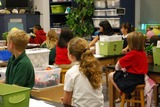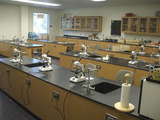
Independent and Dependent Variables Algebra Readiness Remediation Plan
- Subject:
- Mathematics
- Material Type:
- Lesson Plan
- Provider:
- VDOE
- Author:
- VDOE
- Date Added:
- 10/07/2024

Independent and Dependent Variables Algebra Readiness Remediation Plan

Independent and Dependent Variables Algebra Readiness Formative Assessment

Independent and Dependent Variables Mathematics Instructional Plan

This activity is designed to be a self-paced activity to review students on the parts of Experimental Design while at home or in the classroom. There is a simple experiment for the students to complete to generate and collect data and a second example in which they design their own experiment and collect data. They are then led through the process of analyzing their data and writing a conclusion.

Just in Time Quick Check Dependent and Independent Variables

Join Joe as he takes us on a fun investigation into the life of plants. Learn about the types of plants, and how plants survive in their environment. Explore vascular and non-vascular plants through an experiment using the scientific method—and celery! Learn about photosynthesis and dormancy and dive into the parts of plants and pollination. Plants are so important to our lives. Let's get to know them better!

This resource is a simple note catcher for students to record definitions and example of independent variable, dependent variable, constant, and control. This could be coupled with an experiment or demonstration.